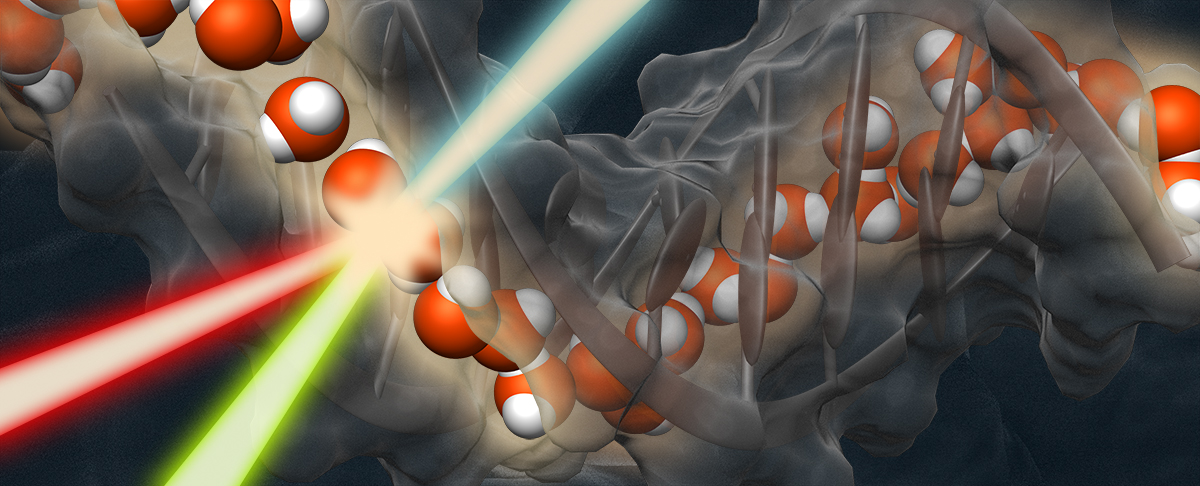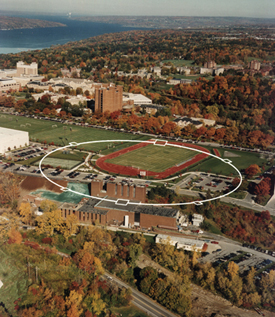June 27, 2017
Lauren Roberts
cunews@cornell.edu
Story Contacts
Cornell Chronicle
George Lowery
607-255-2171
gpl5@cornell.edu
Media Contact
Melissa Osgood
607-255-9451
mmo59@cornell.edu

Macrophages infected with M. tuberculosis lipids. Evgeniya Nazarova/Provided
Brian VanderVen, assistant professor of microbiology and immunology, and colleagues at Cornell’s College of Veterinary Medicine, have discovered a key metabolic mechanism in Mycobacterium tuberculosis(Mtb) bacteria, which presents as a novel drug target for potentially treating tuberculosis. The finding is published in the journal eLife.
Mtb, which currently infects nearly 1.5 billion people and causes more than 1 million deaths each year, requires host lipids (cholesterol and fatty acids) to maintain infection. This is considered a defining characteristic of this pathogen, and is thought to support the bacterium’s ability to persist for long periods of time in hosts during both latent and active infections.
However, the mechanisms of how Mtb assimilates the host’s fatty acids has remained a mystery – until now.
Using a genetic screen, VanderVen and his team identified genes involved in cholesterol metabolism. This identified the gene lucA, which encodes a protein of unknown function. To tease out what the protein does, VanderVen’s team created a novel ΔlucA Mtb mutant, which revealed that the protein encoded by the gene, LucA, is an integral membrane protein, and is required for fatty acid and cholesterol uptake in Mtb. Further work determined that LucA interacts with subunits of specific proteins in the Mce1 and Mce4 complexes, which import fatty acids and cholesterol, respectively. Specifically, LucA stabilizes the transporters – acting as an integral linchpin that, if removed, causes Mce1 and Mce4 to fall apart. VanderVen and his research group plan to investigate two other transporters in Mtb – Mce2 and Mce3 – using this same approach.
“Our data highlights the complexities and weaknesses of a highly successful intracellular pathogen,” said VanderVen. The discovery sheds new light on how Mtb metabolizes fatty acids and cholesterol, and also firmly establishes that LucA is required for full virulence of Mtb in vivo, “and is therefore is a novel drug target in Mtb,” said VanderVen.
The next step for VanderVen and his team will be to investigate drugs that inhibit LucA. “This is ideal, because LucA is a bottleneck and inhibiting this protein with a chemical could disable two pathways at a time,” said VanderVen. As it happens, “we already have discovered chemicals that do just that, so the next step will be to begin refining these as potential therapeutics.”
See the full article here .
Please help promote STEM in your local schools.
Stem Education Coalition
Once called “the first American university” by educational historian Frederick Rudolph, Cornell University represents a distinctive mix of eminent scholarship and democratic ideals. Adding practical subjects to the classics and admitting qualified students regardless of nationality, race, social circumstance, gender, or religion was quite a departure when Cornell was founded in 1865.
Today’s Cornell reflects this heritage of egalitarian excellence. It is home to the nation’s first colleges devoted to hotel administration, industrial and labor relations, and veterinary medicine. Both a private university and the land-grant institution of New York State, Cornell University is the most educationally diverse member of the Ivy League.
On the Ithaca campus alone nearly 20,000 students representing every state and 120 countries choose from among 4,000 courses in 11 undergraduate, graduate, and professional schools. Many undergraduates participate in a wide range of interdisciplinary programs, play meaningful roles in original research, and study in Cornell programs in Washington, New York City, and the world over.

























